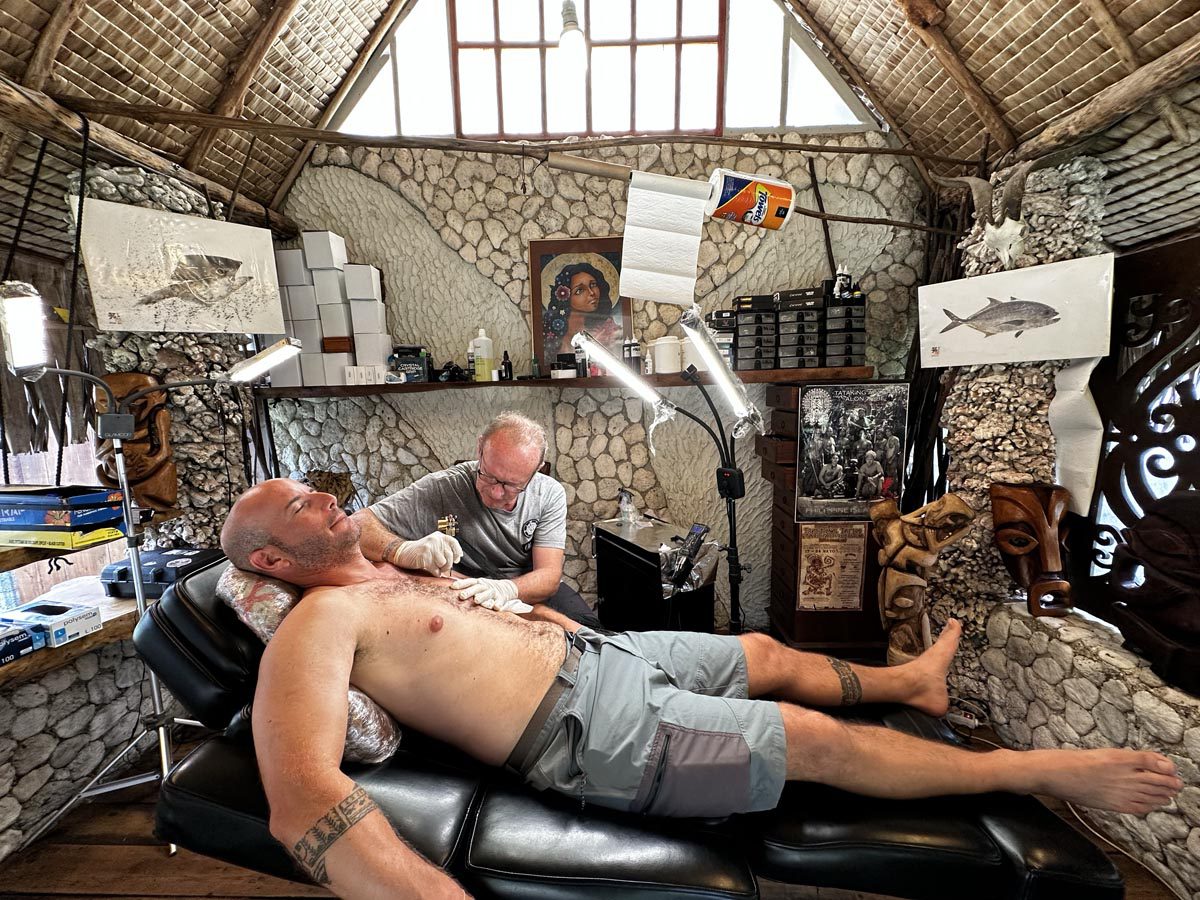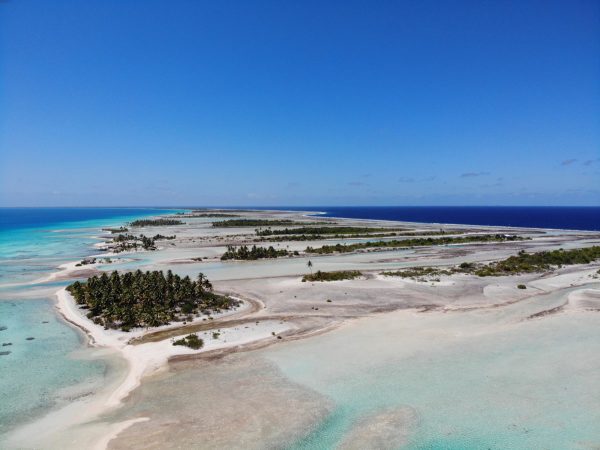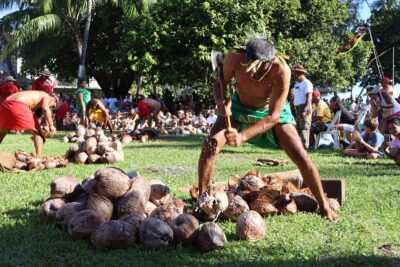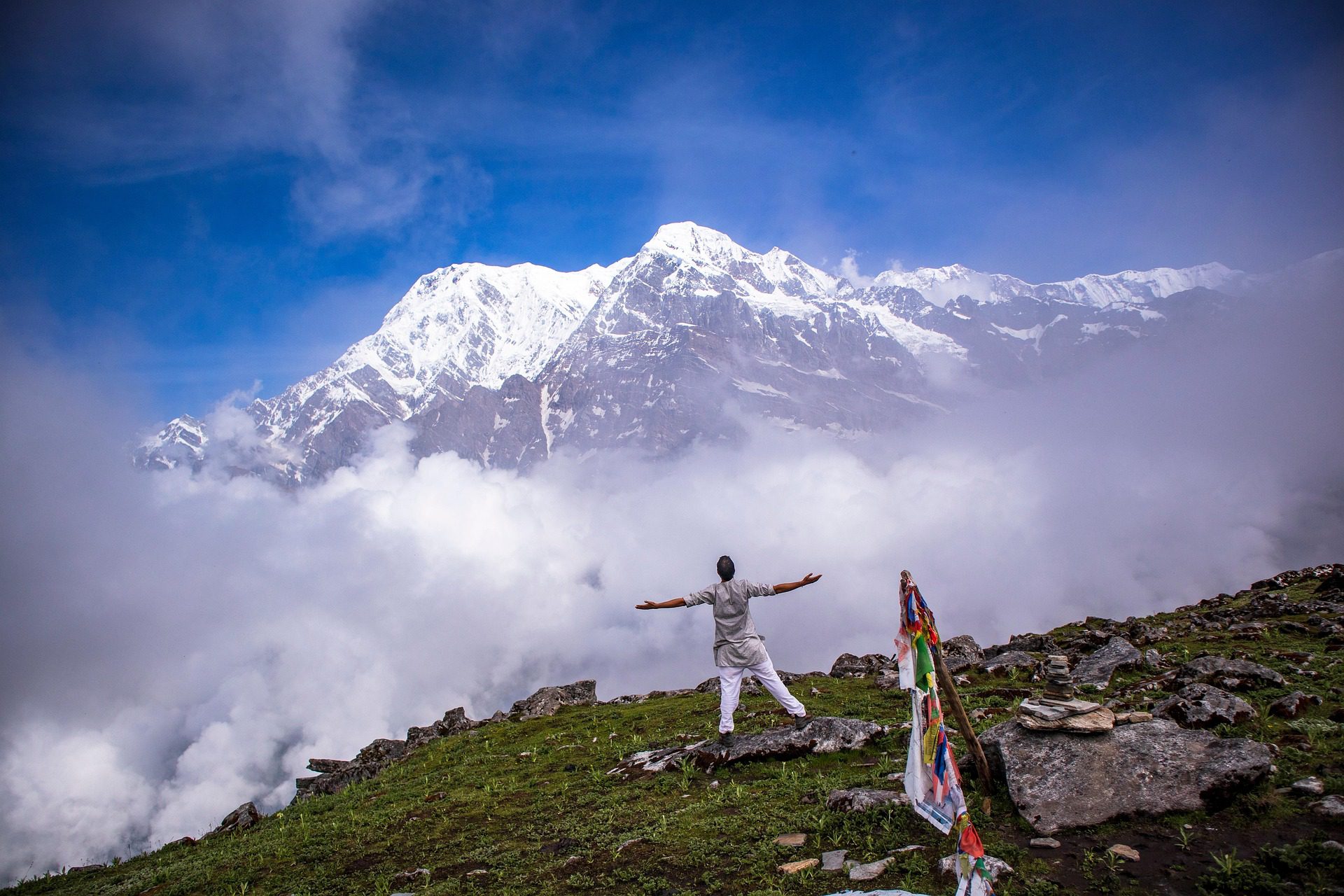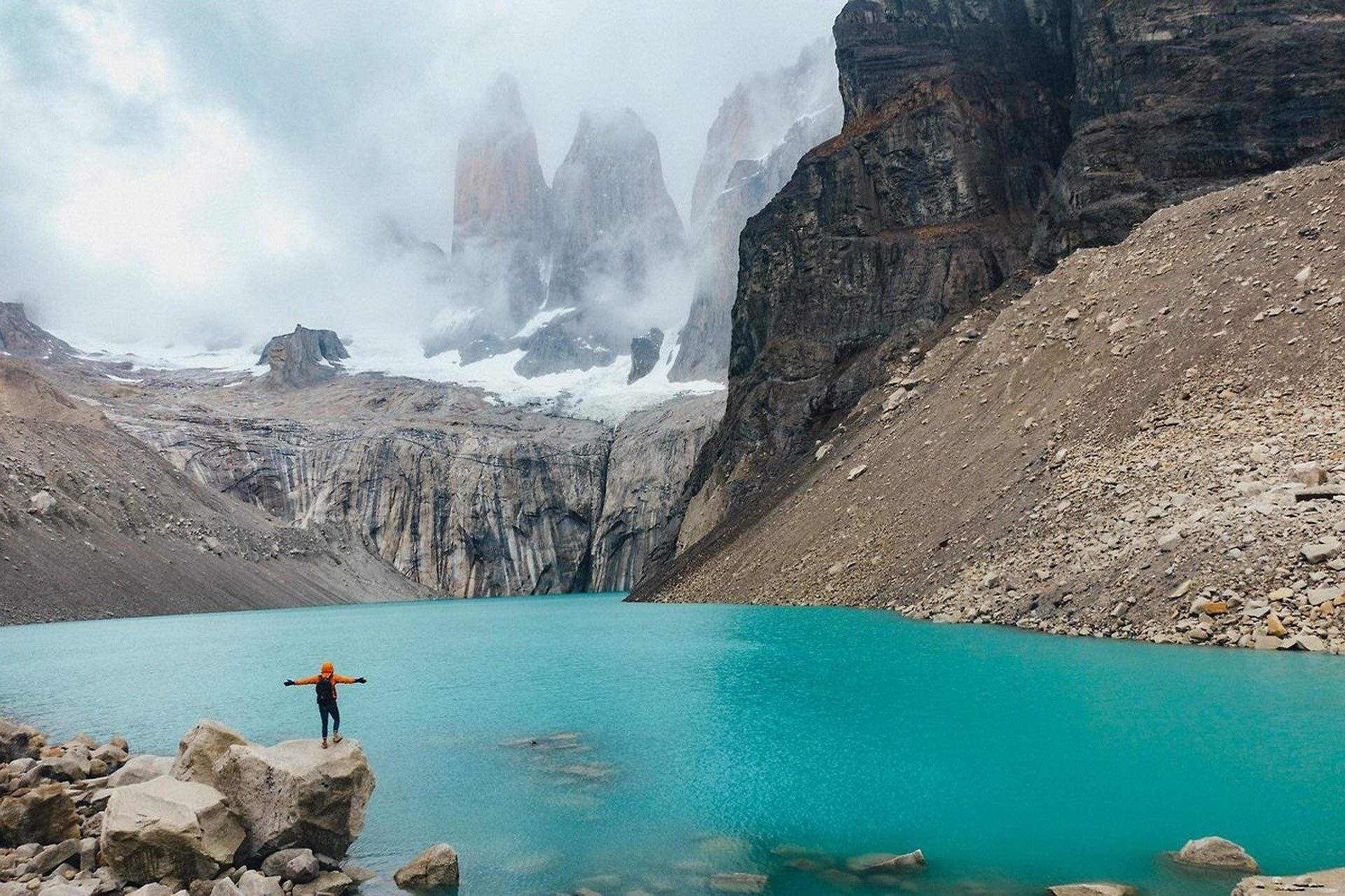Moorea Travel Guide
Moorea Island Travel Tips
Listed here are specific travel tips for Moorea Island to help with the planning stages of your visit.
Recommended Reading
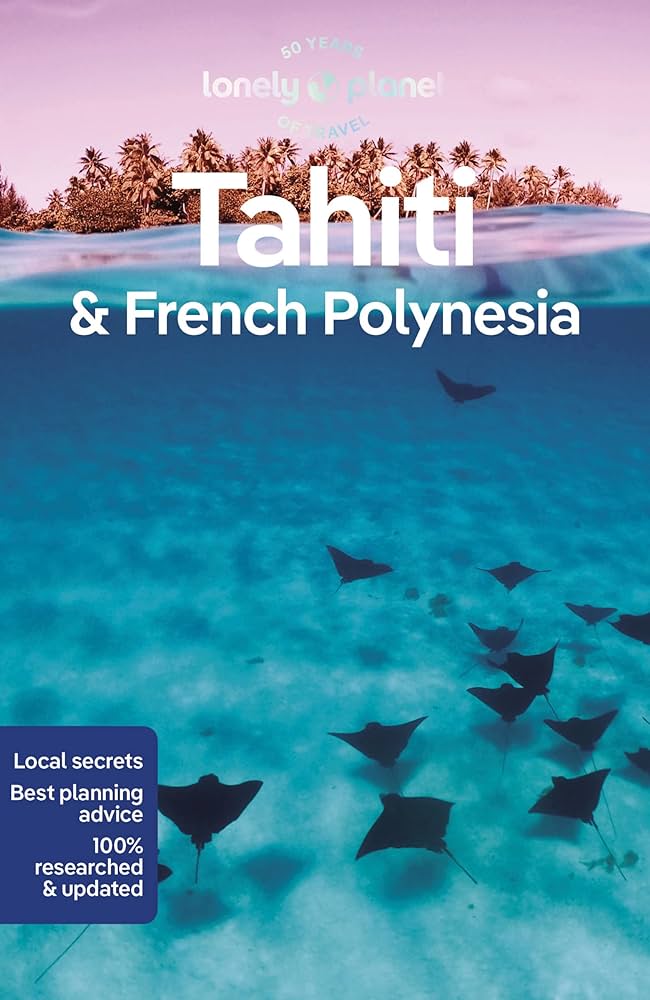
- Living The Dream In Moorea: a personal account of my first two weeks on the island, focused on hiking, snorkeling, and initial exploration.
- Swimming With Sharks & Stingrays: the second part of my first visit to Moorea, focusing on diving, the lagoon, and cultural experiences.
- French Polynesia Travel Guide: everything you need to know before heading to paradise.
- Lonely Planet: ‘the bible’ for any independent traveler. For such a dreamy yet challenging destination, I recommend grabbing one of these for the road to go along with this travel guide.
- Tahiti Tourisme: the official site of the local tourism office. You’ll find relevant information about Tahiti and the outer islands.
How Many Days Do You Need In Moorea?
Moorea is the kind of place you’ll want to retire in (in fact, many people do). You could easily spend your entire vacation in French Polynesia in Moorea, with plenty of lazy or sporty activities to undertake. That said, if you are pressed for time – Moorea can be sampled with a minimum three-day stay. Stays of five days or more will allow you to go beyond the beach with some awesome hikes and inland thrills. If you are super pressed for time, there are daily excursions from Tahiti to Moorea.
Here’s a detailed Moorea sample itinerary for spending up to a week on the island. Pick and choose the days that appeal the most to work into your itinerary.
When Is the Best Time To Visit Moorea?
Moorea lies just 20 km away from Tahiti, so the weather is very similar. However, there can be days of heavy rain in Tahiti yet clear skies in Moorea. As with Tahiti, the best time to visit is in the dry season (June – October), which is also the cooler season. Sunny days are the norm, the beautiful mountains are less covered in clouds, it’s a lot less humid, and there’s even a cool breeze from the east.
I visited Moorea twice during the wet season (Nov – April). There were days of rain, but there were more days of sunshine. In the early morning hours, the mountains were usually cloud-free, only getting cloudy in the afternoon. Unless there’s a storm, the lagoon is usually sunny – even if the mountaintops are covered in clouds. The weather in Moorea can greatly vary from coast to coast. It can be raining on one side of the island but completely sunny on the other. I’ve found that the area around Haapiti gets the most sun (with the bays getting the bulk of the rain).
During the shoulder seasons (October-November and April-May), the weather can be unstable and, for the most part, pleasant.
You’ll be able to dive year-round, watch whales from July to October, hike, and swim throughout the year when it’s not raining. During holidays (especially local holidays), Moorea gets more crowded. It’s a popular destination not only for foreign guests but also for vacationing families from Tahiti.
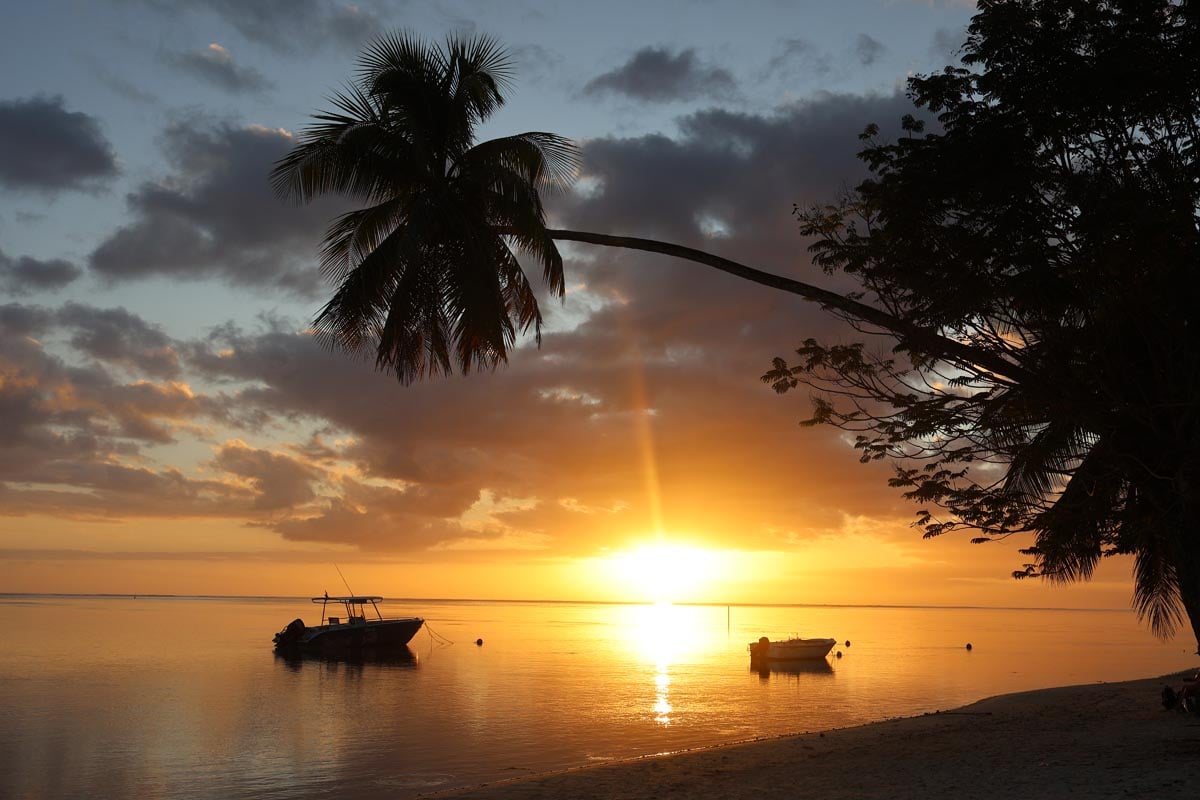
How To Get To Moorea
Moorea is easily reached from Tahiti, and the island is also connected to other popular spots, so you might not have to return to Tahiti from Moorea to hop to your next stop.
By air: a small airport on the island mainly serves flights to and from Tahiti, but you can also fly from Moorea to several stops in the Society Islands, including Huahine, Raiatea, and Bora Bora. The airlines flying to Moorea from Tahiti are Air Tahiti (the major domestic carrier) and the smaller Air Moana.
By ferry: The most convenient way to reach Moorea from Tahiti is by ferry, a scenic journey that takes about 30-45 minutes, depending on the vessel. Three ferry companies operate daily schedules, both arriving at the ferry terminal in Vaiare: the passenger-only Aremiti Express with its fast catamaran and the passenger and vehicle Aremiti II and Terevau. Booking ahead of time is not necessary apart from peak seasons and if you’re also transferring a car on the ferry.
(1) It might still be the case that only the Aremiti Ferry is served by public transportation (see ‘getting around Moorea’). (2) If you suffer from motion sickness, take the slightly slower and larger Aremiti boats, and consider taking a pill before departure if the sea is rough.
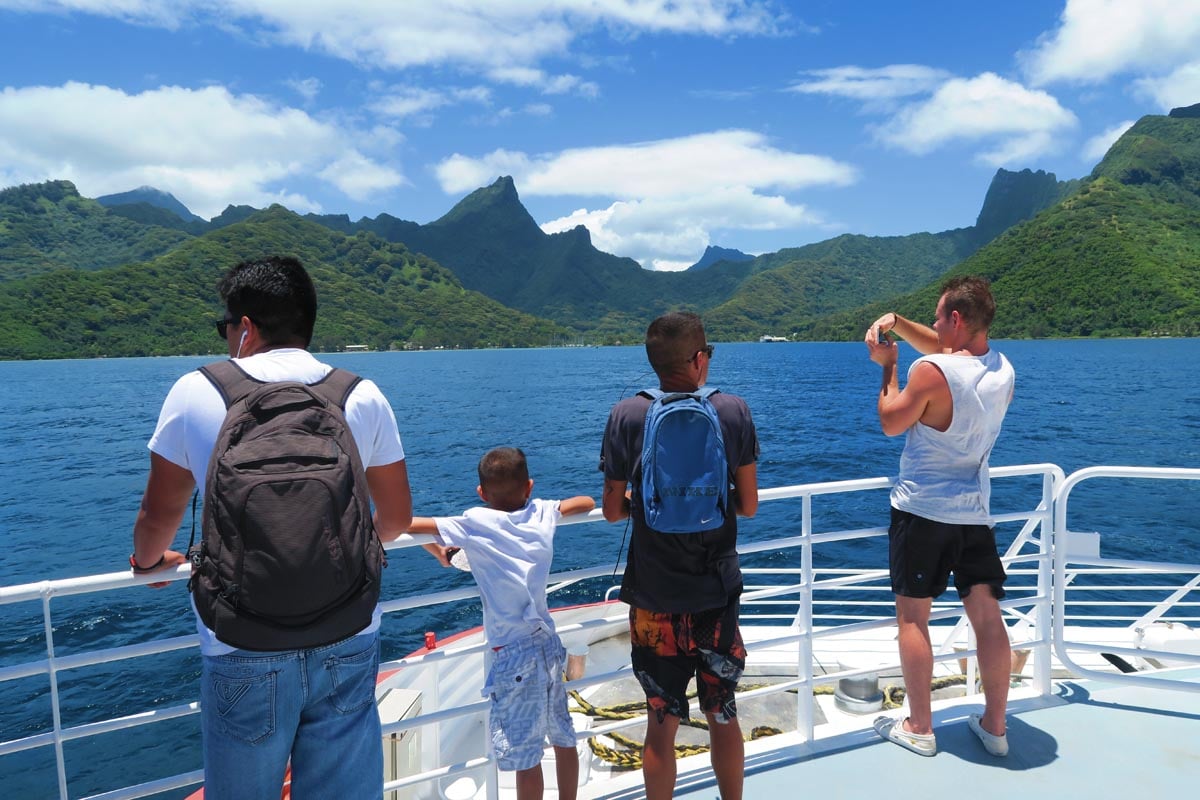
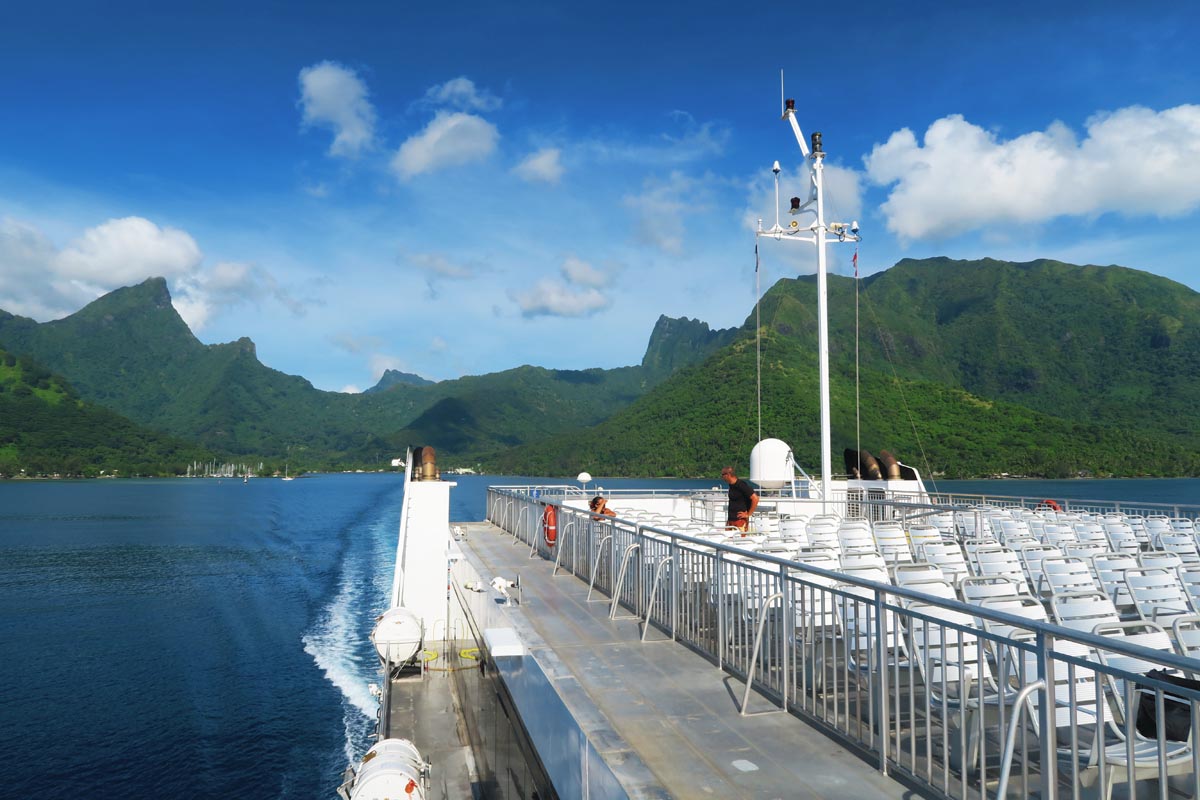
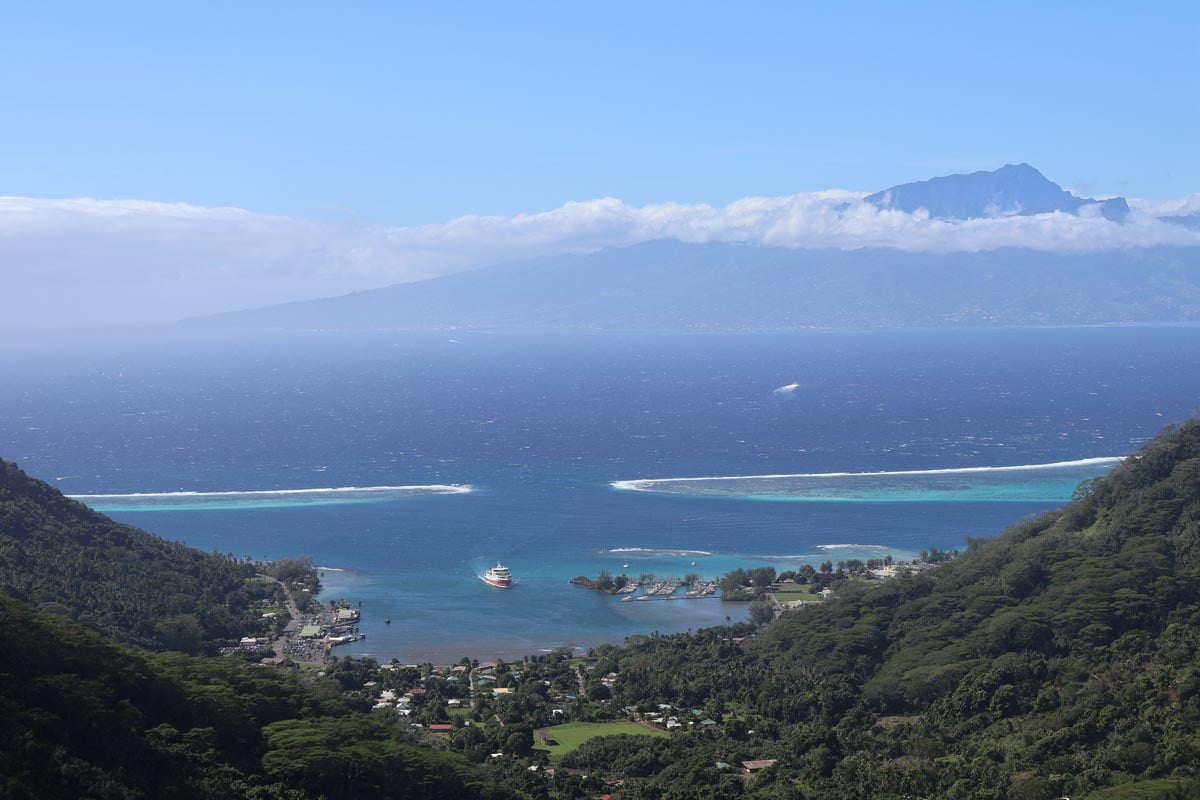
Getting around the island
If you plan on properly seeing Moorea, I highly recommend renting a car for your entire stay. Moorea is a big island without a public transportation system that can be used by tourists. Here are a few options for getting around Moorea.
- Car: I highly recommend renting a car so you can enjoy the best of Moorea. Expect to pay 7,000-10,000 XPF per day for a small car, plus a premium for automatic transmission. This rate fluctuates depending on the rental company and on the number of rental days.
- Bus: only serve the Aremiti ferry. Two lines start at Le Petit Village, one heading north and the other heading south (so there is no complete island loop). Both terminate at the ferry and will pick up passengers along the way (just wave it to stop). The bus will drop you off wherever you want along the way.
- To & from the ferry: public buses likely only serve the Aremiti ferry. Catching the bus from the ferry is easy, as buses will already wait for you. One travels in a clockwise direction and the other counterclockwise. Just ask the driver which bus you need to get on. The tricky part is catching the bus to the ferry. You never really know when the bus will arrive, and there are no designated bus stops. Wait on the main road at least 90 minutes before the Aremiti ferry departure to ensure you don’t miss the bus. I am pretty sure that on Sundays, the bus only picks up from the ferry (double-check this with your accommodation). Also note: on a recent return visit to Moorea which coincided with school holidays, no buses were there to greet the Aremiti ferry.
- Bicycle: A paved bike lane practically hugs the entire coastline of Moorea. Lots of local businesses will also rent bicycles so just ask around. Expect to pay 1500F for 8 hours of rental. I would recommend staying away from beach bikes, as Moorea does have a few hills. A few companies now also rent out electric bikes.
- Scooter: several outfits rent out scooters. Expect to pay 4000-6000 XPF per day, depending on the rental duration.
- Taxi: notoriously expensive in Moorea. A short ride starts at about 4,000F.
- Hitchhiking: generally safe in Moorea but can take a while to find a match.
- Walking: Moorea is a big island so walking long distances is not really a viable strategy.
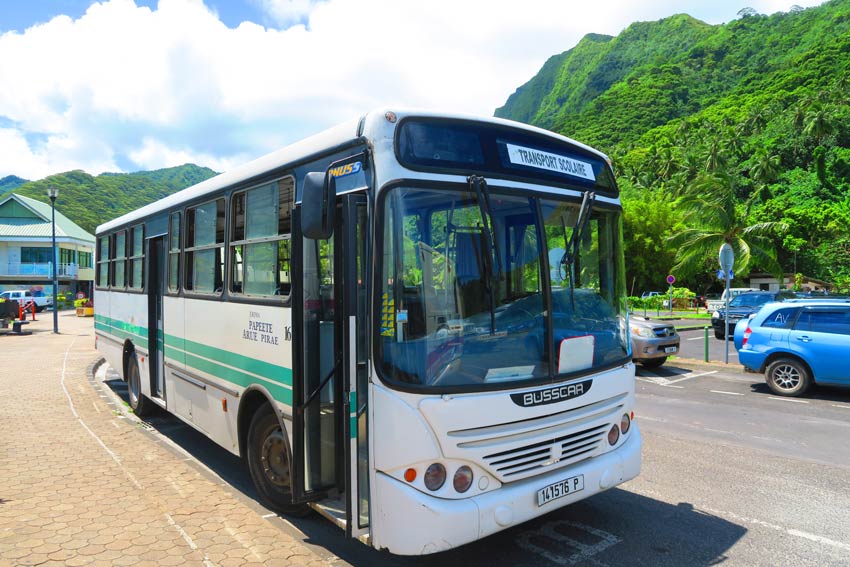
Driving In Moorea
It’s really hard to get lost in Moorea, having just a single main road running along the 60-kilometer coastline. Moorea uses the pointe kilometre system (PK), with markers along the road beginning at the airport and running in both directions until meeting at PK 35. Don’t expect to be driving over 60 km/h (which is also the speed limit), though most locals do. That said, there are two things to watch out for. (1) After the rainy season, some sections of the road will be littered with potholes until local authorities manage to fix them. (2) Drive with extra care at night! Roads are not well-lit, locals (and animals) frequently cross the road, and of course, there are potholes. I certainly would not recommend riding a scooter at night.
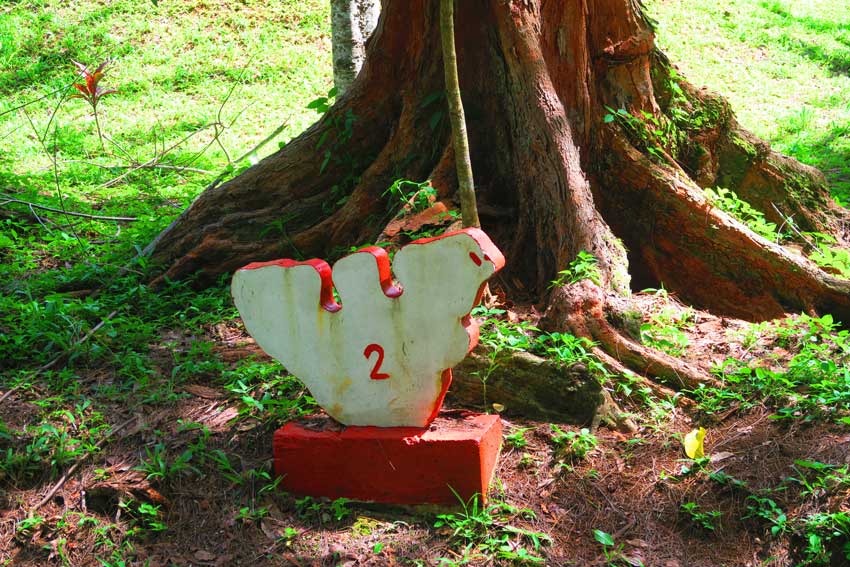
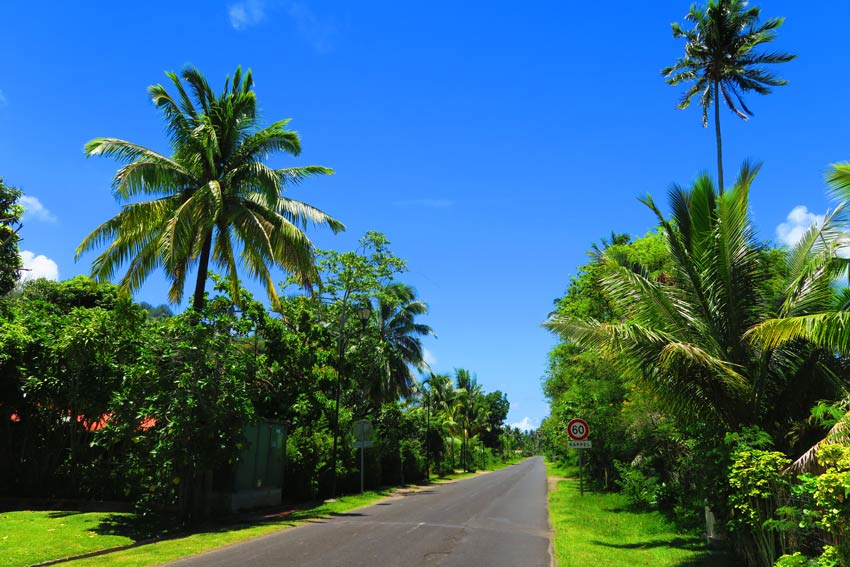
What To Pack for Moorea?
Moorea is a tropical destination, and as such – I recommend packing clothes that dry quickly and keep moisture (a.k.a sweat) out. Be prepared for rainy weather with a light rain jacket, and don’t forget to pack all the beach gear that you need, including a mask and snorkel. Moorea also offers a good opportunity for hiking. Have a look at the X Days In Y Packing List for recommendations on what to pack for Moorea based on my experience.
Moorea Average Costs
Here’s a cost breakdown from my first visit to Moorea in 2015/6. Keep in mind that I was here for a month, renting a place on a monthly basis and mostly (but not always) cooking my own meals. Have a look at the French Polynesia travel guide for a more general view of what you can expect in terms of costs for key items.
What languages are spoken in moorea
French is the most common language, followed by Tahitian. English is widely spoken in Moorea, especially with locals working in the tourism industry. You should have no problem finding your way even if you do not speak French.
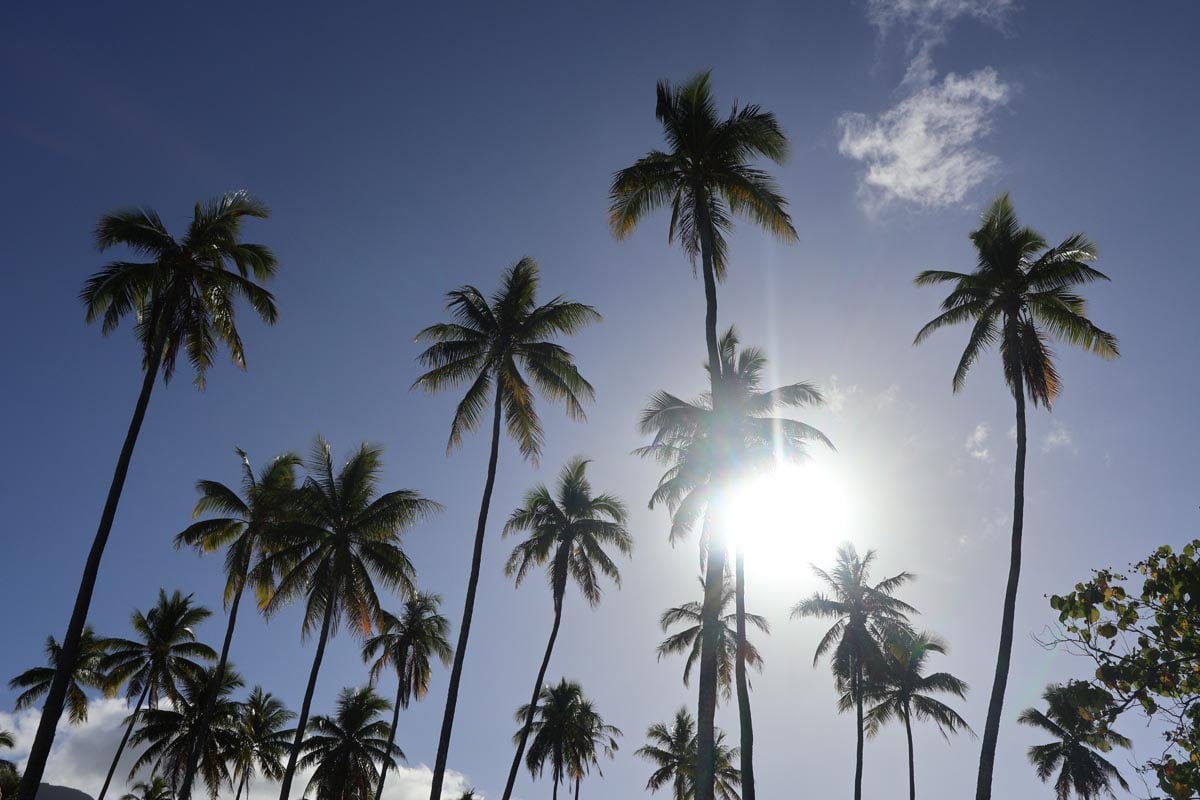
Drinking Water In Moorea
Water should be safe to drink out of the tap. Just to be on the safe side, inquire at your accommodation. Note that Moorea recycles plastic bottles. There’s a free filtered water station right next to the fire station between Haapiti and Le Petit Village. It’s hard to miss because there are always locals filling up water bottles here.
WiFi & Mobile Data In Moorea
Both Vini and Vodafone have good mobile coverage in Moorea. You can purchase travel SIM cards in their Tahiti offices or at local retailers. Vini has better and wider coverage in French Polynesia. Free Wi-Fi should be available in most accommodations and most restaurants but note that some vacation rentals have no Wi-Fi coverage, so be sure to check before making a reservation.
Safety In Moorea
For general safety tips in French Polynesia, have a look at the ‘safety’ section of the French Polynesia Travel Guide. Like all the islands outside Tahiti, Moorea is a very safe place. That said, drive with extra care at night, and to be on the safe side – lock your doors and tilt your windows before going to bed (or leaving your room). There have been reports of thefts during the night, even when people were sleeping. Lastly, do not leave anything tempting in your car, and keep an eye on things when you go swimming at public beaches.
What To Buy In Moorea?
As you would expect from an island that gets a lot of visitors, you can find all the usual Tahitian souvenirs here. Around Maharepa and Le Petit Village (and, of course, in and around the hotels), you’ll find the usual black pearl and pareo shops (sarongs). Note that black pearls are not produced in Moorea, and you’re better off buying them in Tahiti (see the ‘shopping’ section in the French Polynesia Travel Guide for more info). For something original, head to the Rotui-Manutea factory store and check out the various juices, jams, and liqueurs.
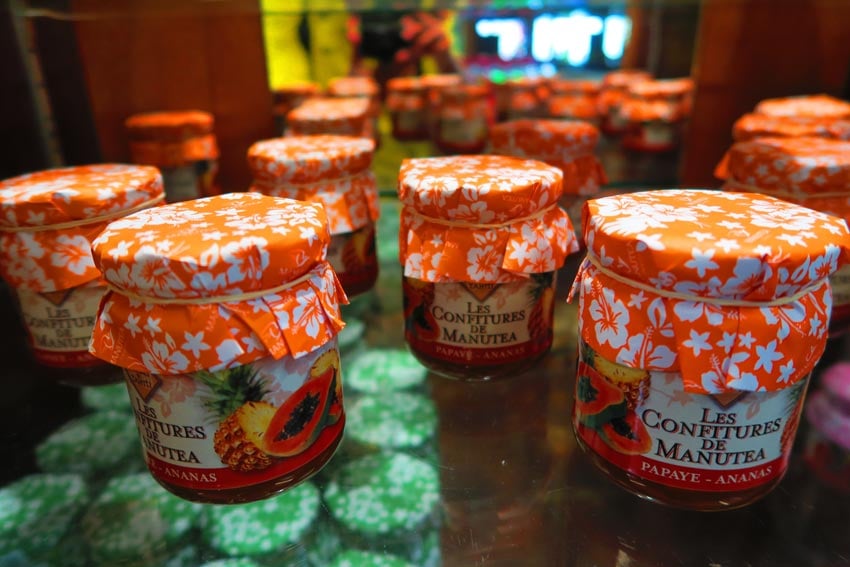
How To Save Money In Moorea?
- Staying for more than 3-5 nights? Book accommodations with cooking facilities. You’ll be able to whip up delicious dinners on your own, avoiding the 1,800-2,000F price tag at local snacks (restaurants much more). The same goes for breakfast.
- Buy fruits & vegetables from family stalls on the side of the road.
- If you’re not locked on seeing every inch of Moorea, stay in the area in or around Opunohu and Cook’s Bay. That part of the island is where most of the highlights are, and you might be able to see everything on a bicycle – avoiding the need to rent a car for the entire duration of your stay.
- Get here on the Aremiti Ferry, which is likely served by local buses (unlike the Terevau Ferry)
- Drink tap water. It’s usually perfectly safe in Moorea. Just double-check before.
- Don’t discount those tourist maps! They will have a few very useful coupons for businesses throughout the island.
- Doing some shopping? Some items qualify for a tax refund upon your departure or even on the spot (such as black pearls).
Getting a Tattoo In Moorea
It’s best to get this lasting souvenir on your final stop before heading home, so if it happens to be Moorea, you have quite a few options. There are a few tattoo artists in Le Petit Village and Maharepa, but a friend from Tahiti recommended Purotu, a renowned tattoo artist who specializes in traditional Polynesian tattoos. He lives between the juice factory and the Hilton Resort on the side facing the mountain (just look for a sign bearing his name on the roadside). Purotu charges a steep 15,000 XPF per hour, but it’s well worth it if you want to get a traditional Polynesian tattoo (the rate is the same for a machine tattoo). Get in touch with Purotu via his Facebook Page or call +689-89722857 (he speaks English).
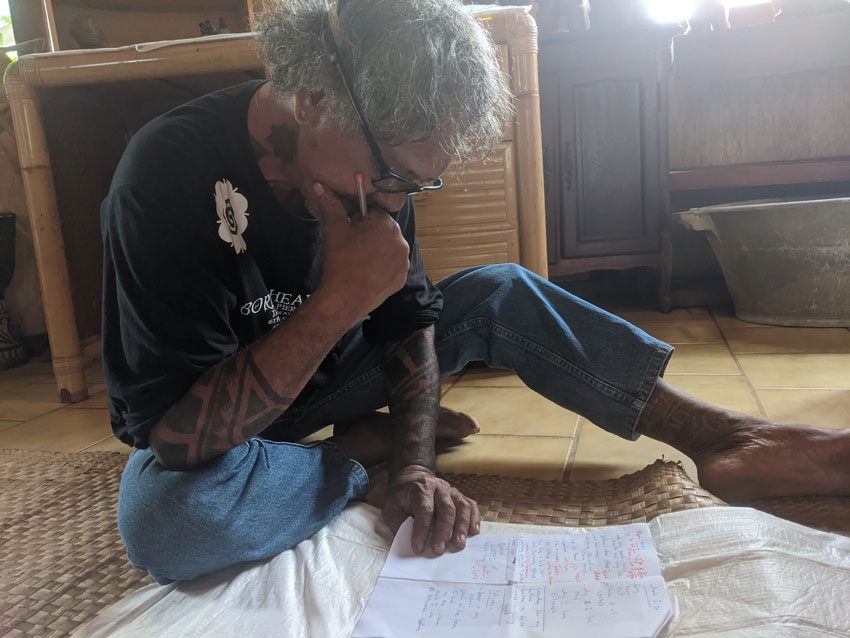
Another solid option is Gil, who lives next to Temae Beach on the northeastern tip of the island. Gil and Purotu are friends, and they’ve worked together over the years to promote the art of traditional Polynesian tattoos in the region. Get in touch with Gil at +689-87775823 (he speaks English).
